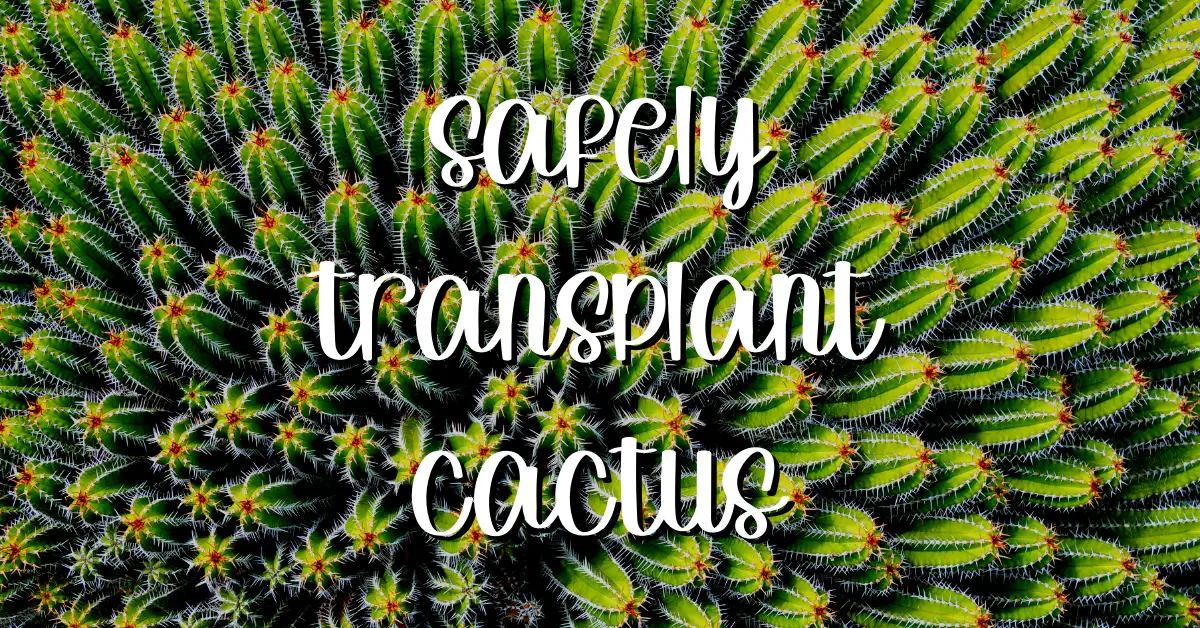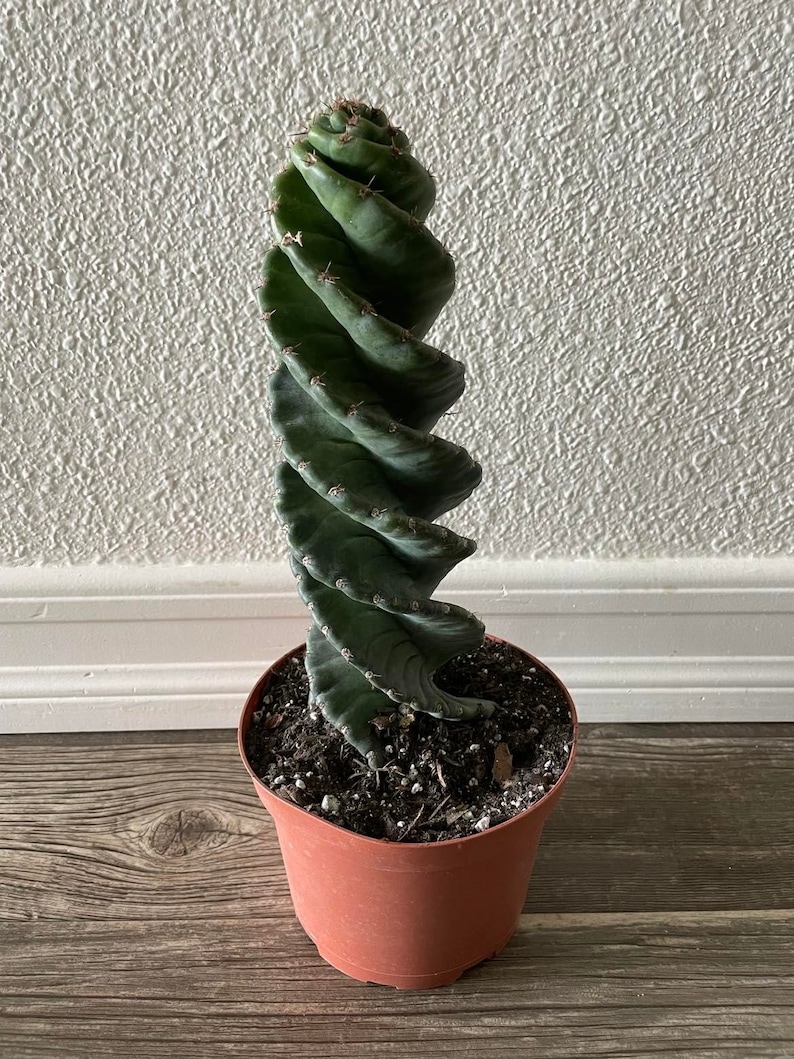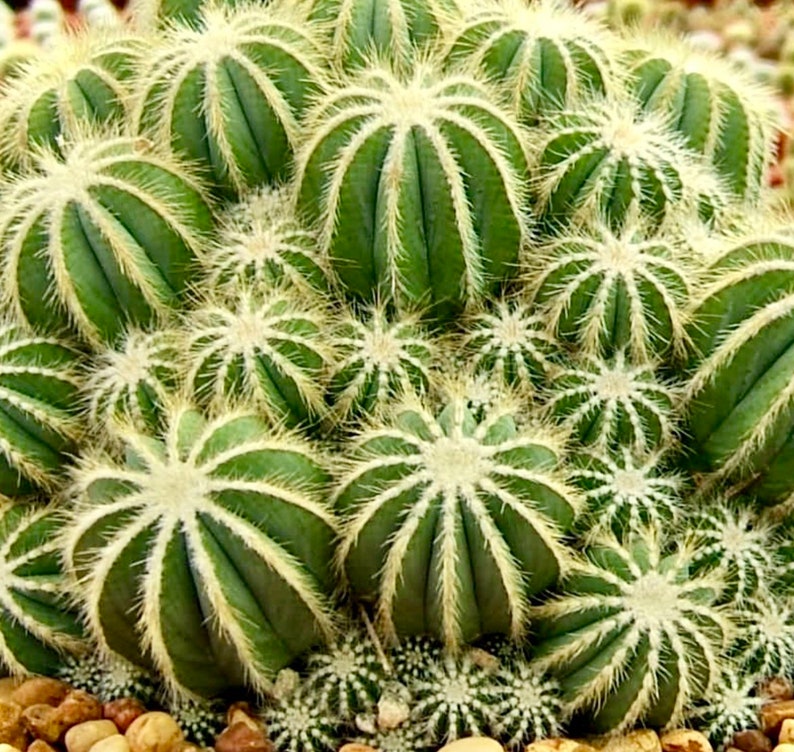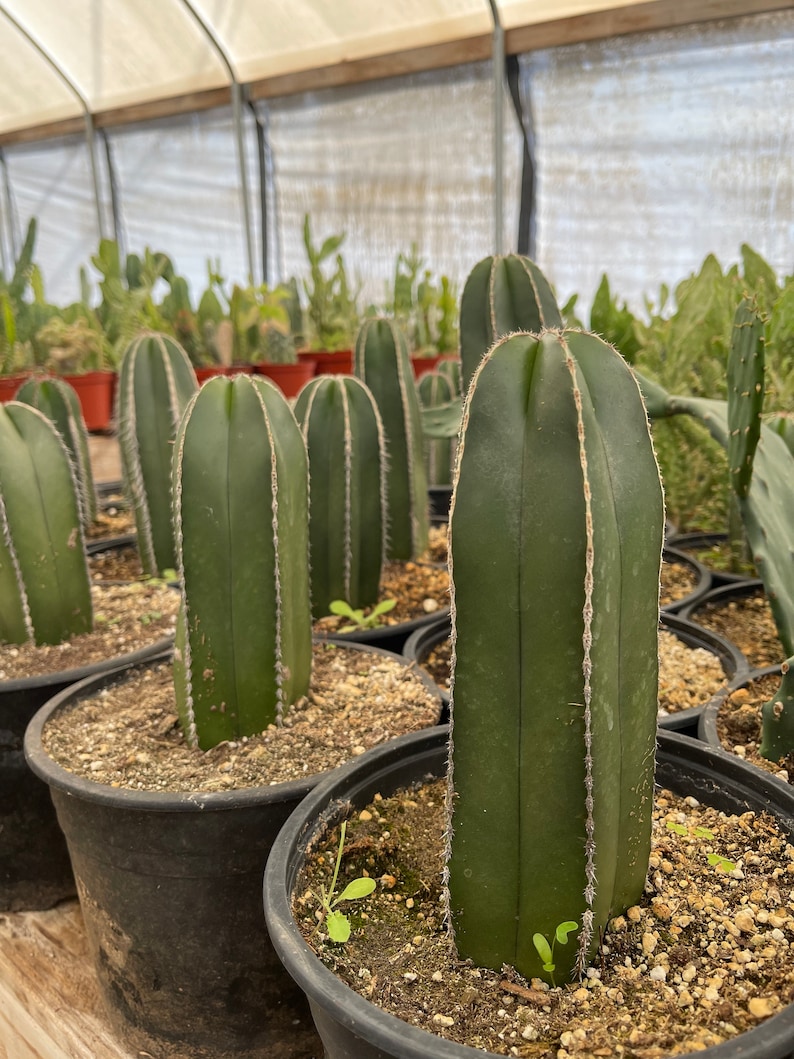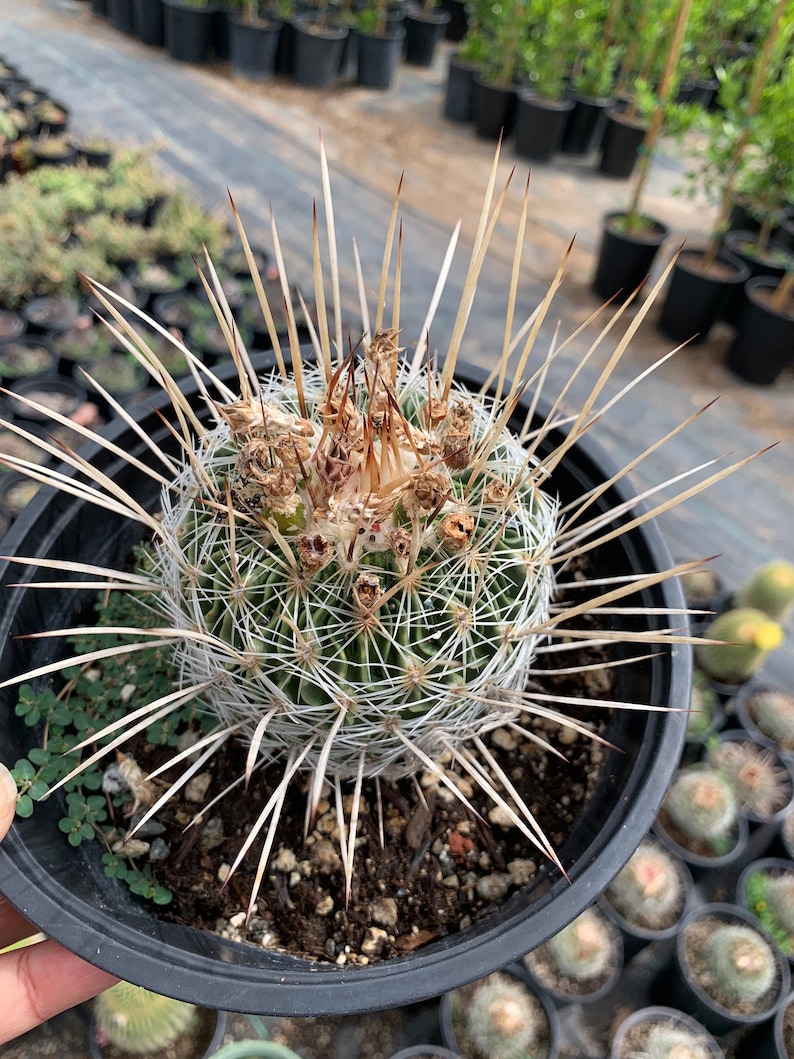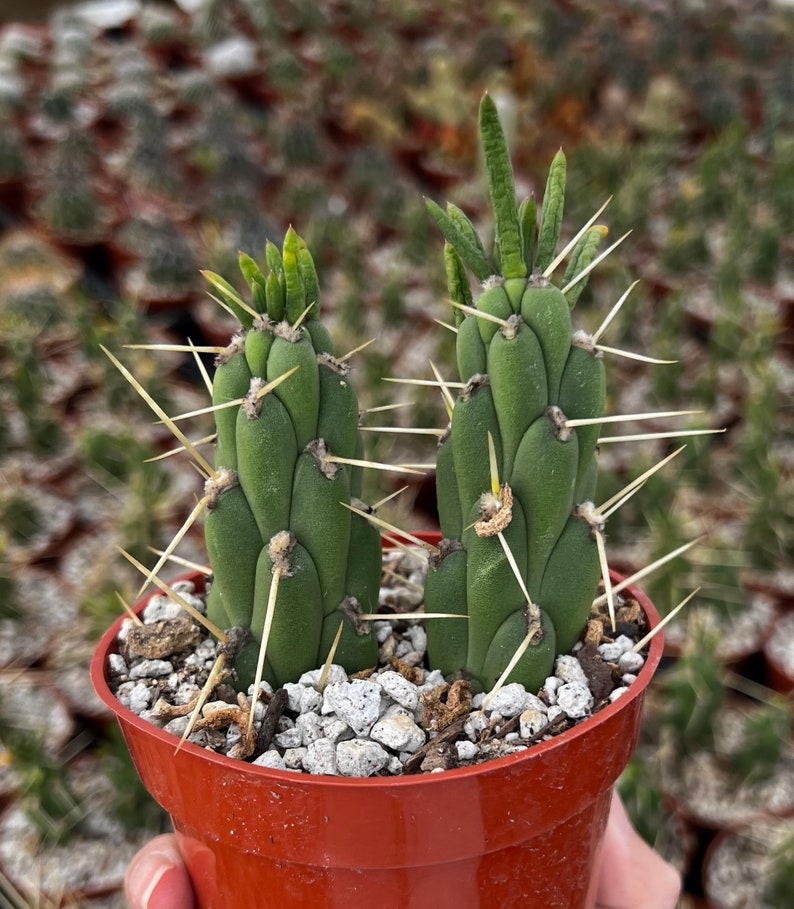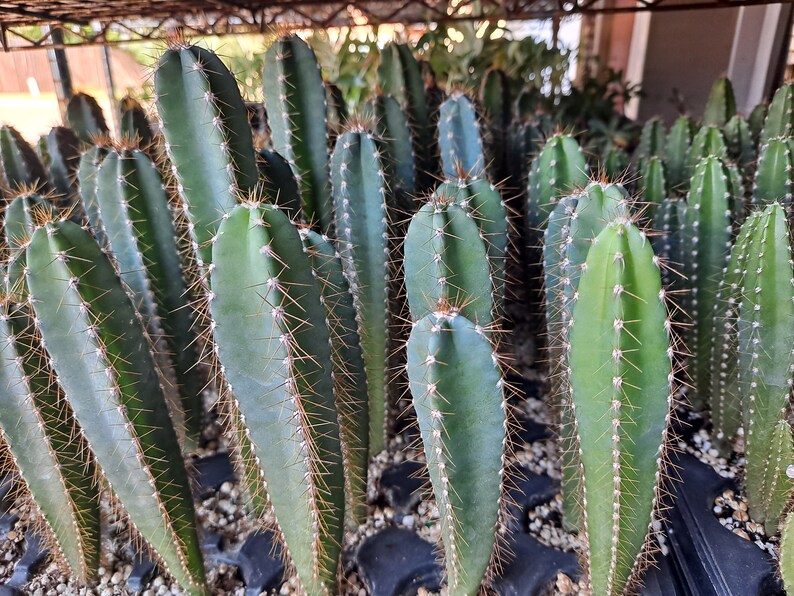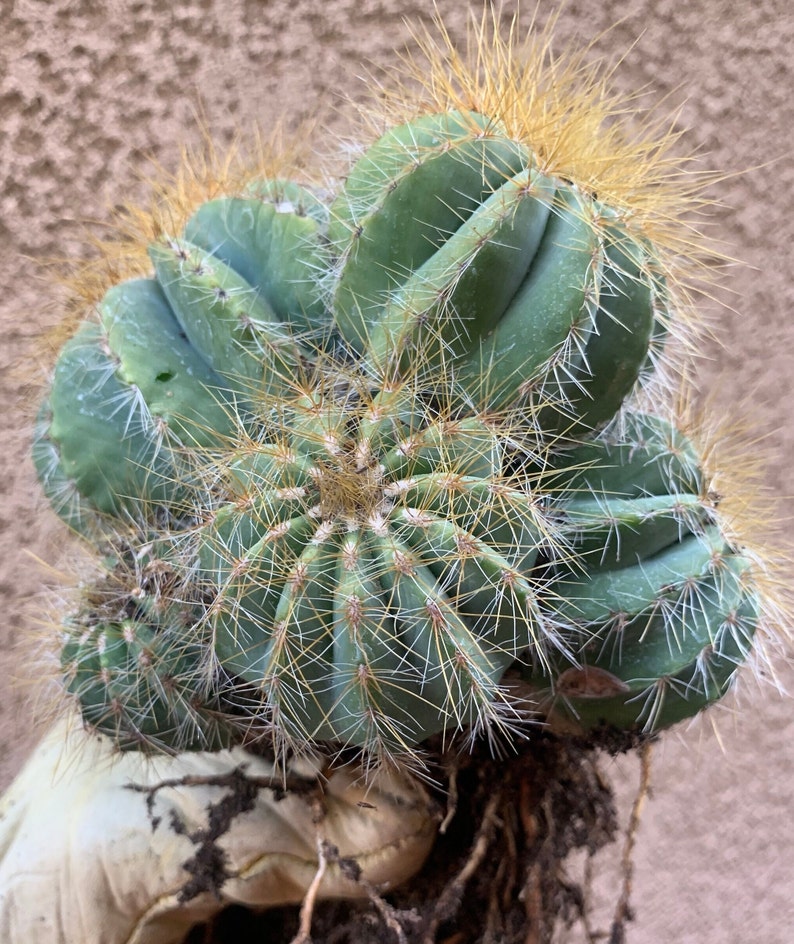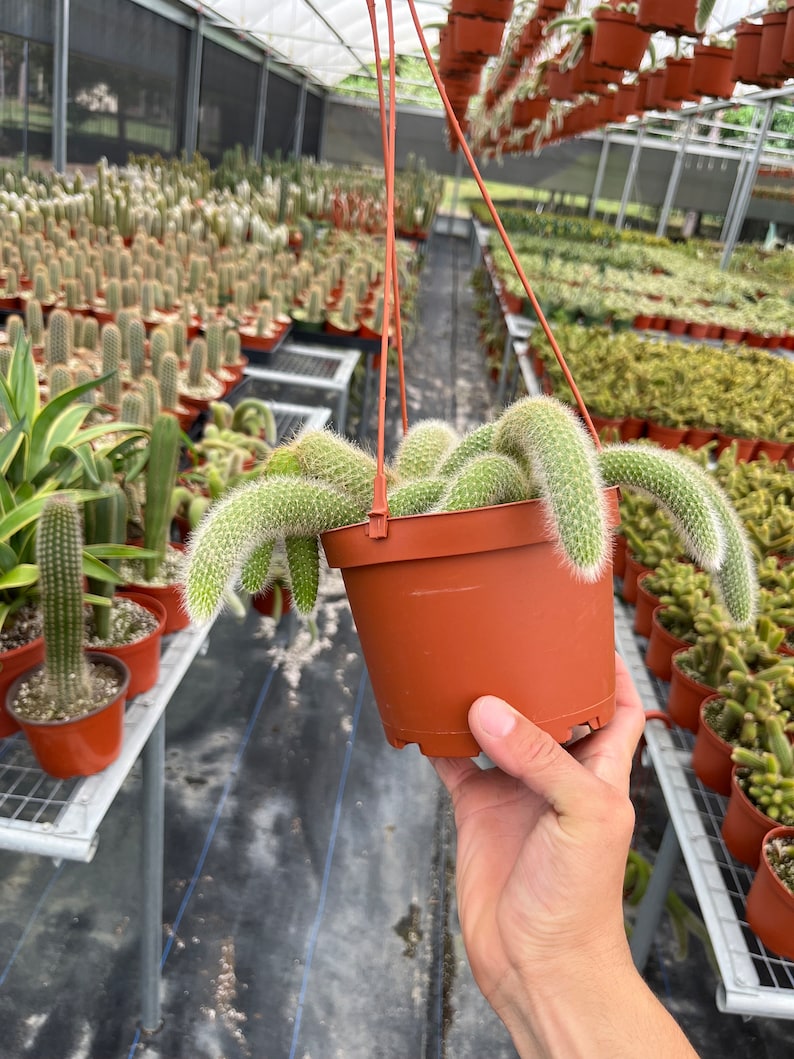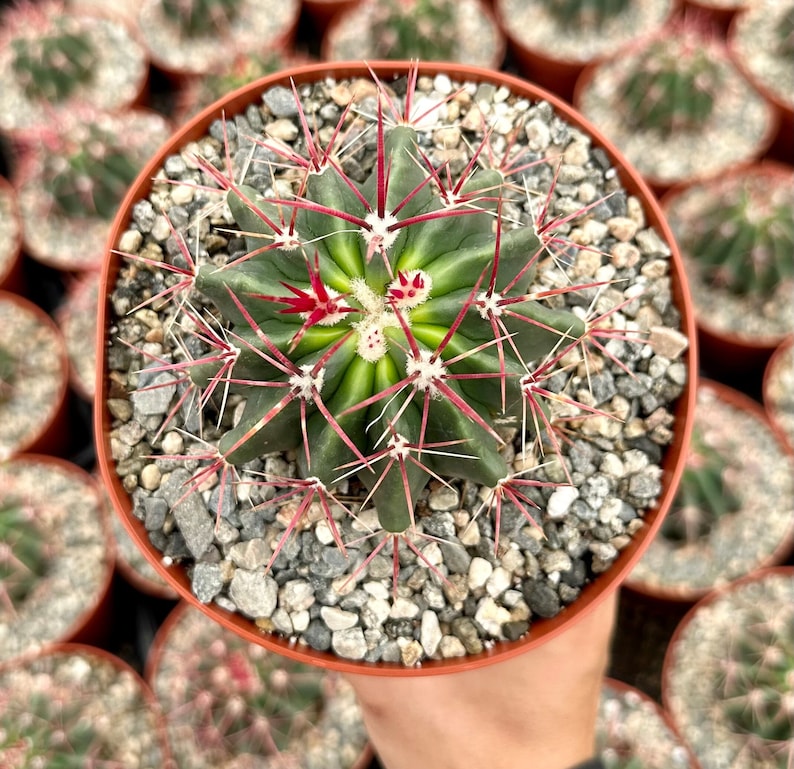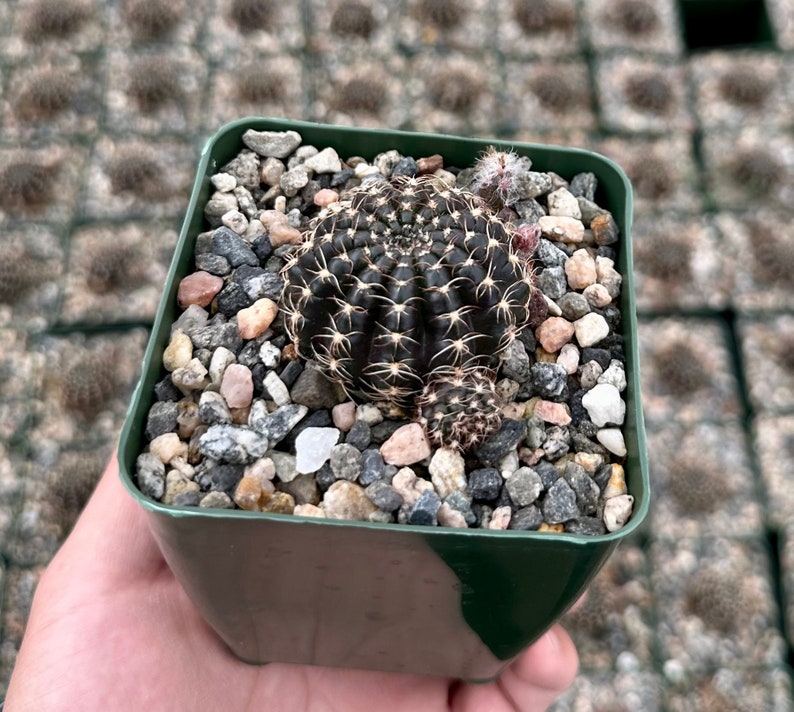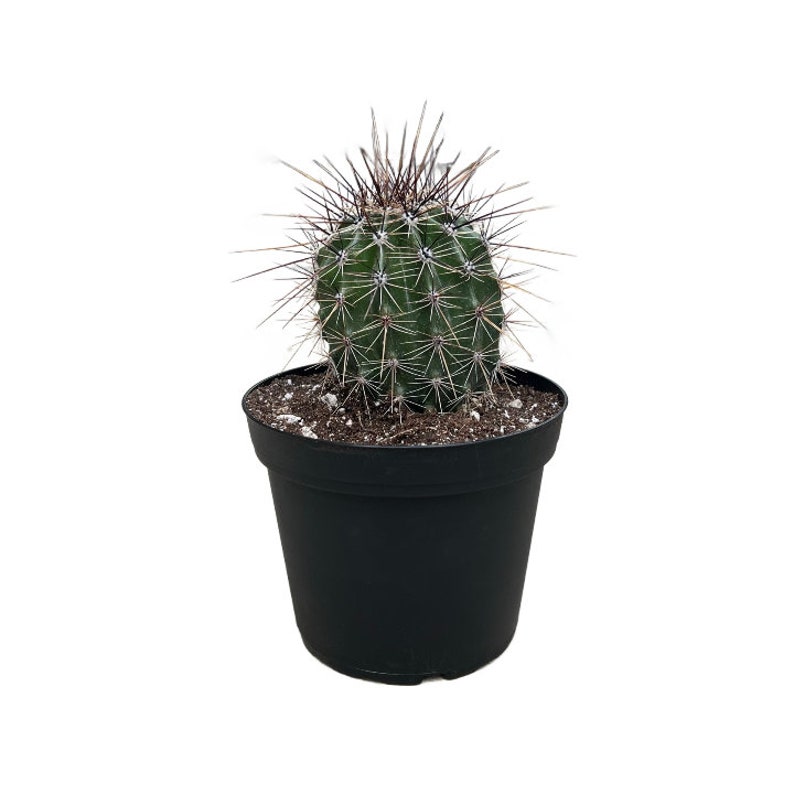Cacti are hardy and drought-resistant plants, but sometimes they may need to be transplanted to a larger pot or to a different location in your garden. Transplanting cacti can be a tricky process, but with the right preparation and care, it can be done safely and successfully. In this comprehensive guide, we’ll walk you through the steps of preparing, transplanting, and caring for your cactus to ensure its survival and thriving in its new home.
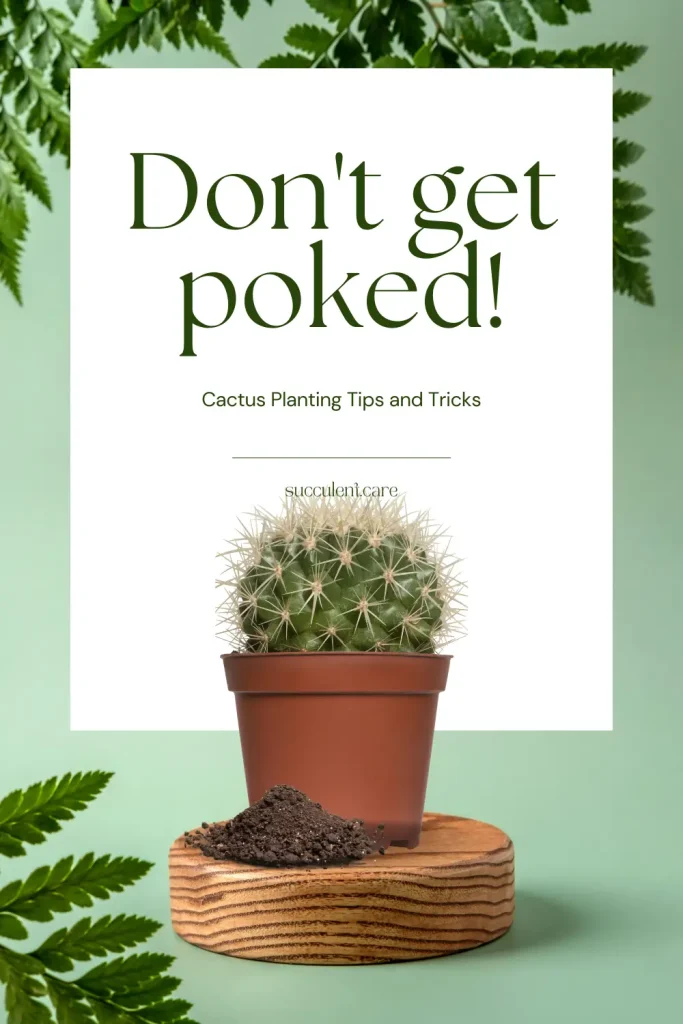
Cacti may need to be transplanted for a number of reasons, such as outgrowing their current pot or needing to be moved to a location with better lighting. It’s important to choose the right time of year to transplant your cactus, as well as the right pot and soil. In this guide, we’ll cover all the necessary steps for successfully transplanting your cactus. (I’ll also be posting some of my favorite cacti that you can buy on Etsy. I receive a small commission for any purchases made through these links with no additional cost to yourself.)
What are the best conditions to transplant a cactus?
When it comes to transplanting a cactus, timing is everything. The best time to transplant cacti is during the spring or early summer when the plant is actively growing. This will give the cactus the best chance to adjust to its new pot and location.
Choosing the right pot and soil is crucial for the success of the transplant because it determines the cactus’ ability to grow and thrive in its new home. The pot should be large enough to accommodate the cactus’ root system. If the pot is too small, the cactus will become root-bound, which can lead to stunted growth and poor health. In contrast, if the pot is too big, the cactus may not have enough soil to anchor itself, and its stability may be compromised.
The pot should also have drainage holes at the bottom to ensure proper drainage. Cacti are drought-resistant plants, but they still require water to survive. If the pot does not have drainage holes, water can accumulate at the bottom of the pot, leading to waterlogged soil, which can cause the cactus’ roots to rot.
For soil, a well-draining cactus mix or a combination of potting soil and sand is ideal. Cacti require well-draining soil to prevent their roots from sitting in water, which can cause rot. A cactus mix or a combination of potting soil and sand will provide the cactus with the necessary drainage to prevent this from happening.

Consider amending your soil with Bonsai Jack’s gritty mix to ensure your succulent soil drains quickly to prevent it from staying moist for too long. Source: Etsy
Using the right pot and soil will ensure that your cactus has the best chance to adjust to its new pot and location, and it will promote new growth, and overall healthy plant. It’s important to keep in mind that the right conditions for a cactus to thrive are different than other plants, so it’s crucial to provide the right pot, soil and drainage for a cactus.
Preparing for Transplant
Before transplanting your cactus, it’s essential to prepare the plant for the move. This includes removing any damaged or diseased parts of the cactus, as well as gathering the necessary tools and protective gear to handle the cactus safely.
How can I protect myself from the cactus’ spines during transplant?
Cacti are known for their sharp spines, which can cause injury if not handled properly. To protect yourself, it’s recommended to wear protective gloves and long sleeves while handling the cactus. Alternatively, you can use a sturdy pair of tongs or a thick towel to handle the cactus if you are not using gloves.
Transplanting the Cactus
Once your cactus is prepared and you have the necessary tools and protective gear, it’s time to transplant the cactus. The steps for transplanting a cactus include:
- Removing the cactus from its current pot
- Loosening the roots to promote new growth
- Placing the cactus in the new pot and filling in with soil
- Watering the cactus and providing proper drainage
When removing the cactus from its current pot, be sure to handle it gently to avoid damaging the roots. Squeeze the sides of the nursery pot to loosen the soil just enough for the pot to be able to slide off. Once the cactus is out of the pot, loosen any compacted roots with your fingers or a small tool. This will encourage new root growth in the new pot.
When placing the cactus in the new pot, make sure it’s planted at a similar depth as it was in the previous pot. Fill in with soil and gently press down to remove any air pockets. Water the cactus lightly, and make sure that the pot has drainage holes to prevent water from pooling at the bottom.
Aftercare
After transplanting, it’s important to provide proper care for your cactus to ensure its survival. This includes providing proper lighting and temperature conditions, monitoring for signs of stress or disease, gradually acclimating the cactus to full sun, and watering and fertilizing as needed.

Succulent fertilizer available to purchase on Etsy.
In the first few weeks after transplanting, it’s essential to monitor your cactus for signs of stress or disease. This includes checking for wilted or yellowing leaves, as well as any signs of rot or fungal growth.
When you’re rooting or transplanting your succulents and cacti, use SUPERthrive to help reduce the chance of transplant shock and grow a strong root system.
Proper lighting and temperature conditions are also crucial for the cactus’ survival. Cacti prefer bright, indirect sunlight, so gradually acclimate the cactus to full sun over a period of a few weeks. Most cactus species can handle full sun if acclimated properly. If the cactus is placed in direct sunlight too soon, it could cause sunburn and damage to the plant.
When it comes to watering, cacti are drought-resistant but still require water to survive. Water the cactus sparingly in the first few weeks after transplanting, and then gradually increase the amount of water as the cactus becomes established in its new pot. It’s important to make sure that the pot has proper drainage to prevent water from pooling at the bottom.
Fertilizer is not necessary immediately after transplanting, but it can be beneficial to fertilize your cactus with a cactus-specific fertilizer once it becomes established in its new pot.
What are the best practices for transplanting cacti with long spines?
When transplanting a cactus with long spines, it’s best to use a pair of needle-nose pliers to grasp and remove the spines before transplanting. This will make the process of transplanting the cactus safer for both you and the plant.
It’s also important to keep in mind that not all cacti are suited for transplanting, some cacti species have a taproot, which is a long and deep root that doesn’t transplant well, so it’s best to research the specific species you have before transplanting.
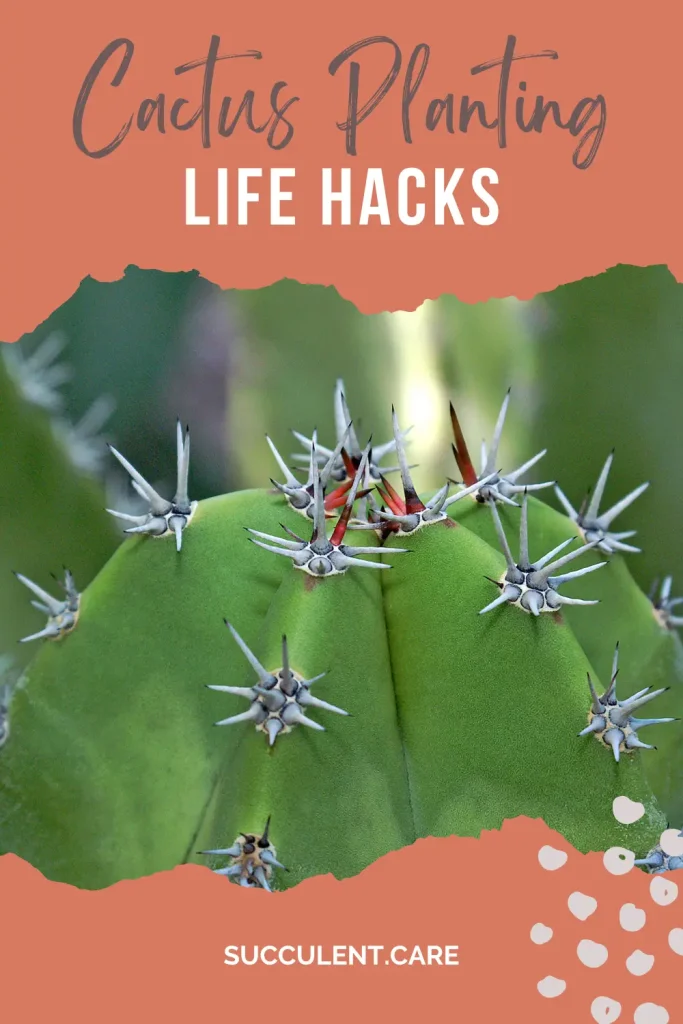
Cactus Planting Life Hacks
For small cacti in a 2″-6″ pot, using leather gloves or a thick towel would probably be enough protection. I’ve used a few layers of newspaper wrapped around the cactus or simply long, sturdy tongs if the cactus is small enough.
If you need further protection from longer spines you can use old scraps of carpet to wrap the cactus in or you can use scraps of styrofoam that come in shipping boxes to place on the sides of the cactus when moving it. I’ve also planted large cactus specimens in the ground without anything and just using gravity to plop the cactus in the pre-dug hole.
What to do if you get stuck by cactus spines:
If you get stuck by a cactus, it’s important to take immediate action to remove the spines and prevent infection. Here are a few steps you can take to fix your sticky situation:
- Carefully remove the spines: Use tweezers or a needle to gently remove any visible spines from the affected area. Be sure to sterilize the tweezers or needle with rubbing alcohol before use to prevent infection.
- Use tape if the spines are tiny: Place a piece of clear tape over the affected area and press down firmly. Then, gently pull the tape off in the opposite direction of the spine. This can help to remove small or deeply embedded spines.
- Use a needle: Sterilize a needle with rubbing alcohol and use it to gently pierce the skin around the spine. Once the needle is close enough to the spine, use tweezers to remove it.
- Use a magnifying glass: Use a magnifying glass to examine the affected area and locate any remaining spines. Once you’ve identified the spines, use tweezers or a needle to remove them.
- Use a commercial cactus spine removal tool: There are commercial tools available that are specifically designed to remove cactus spines. These tools often have a small brush or a needle-like tip that can help to remove small or difficult-to-reach spines.
- Professional help: If you are unable to remove the spines yourself, or if you are experiencing severe pain or other symptoms, seek professional medical help.
- Clean the wound: Clean the affected area with soap and water. You can also use hydrogen peroxide or rubbing alcohol to disinfect the wound.
- Watch for signs of infection: Keep an eye on the affected area for signs of infection, such as redness, swelling, or pus. If you notice any of these symptoms, seek medical attention.

Source: Etsy
If the cactus spine has broken off, it’s important to remove it as soon as possible to prevent further complications. If the cactus spine has been left in the wound, it can cause inflammation and infection. If you are unable to remove the spine or if you experience severe pain, swelling, redness or other signs of infection, seek medical attention immediately.

Source: Etsy
It’s also important to note that some cactus have barbs that can make the spines hard to remove, so it’s better to seek professional help when dealing with them.
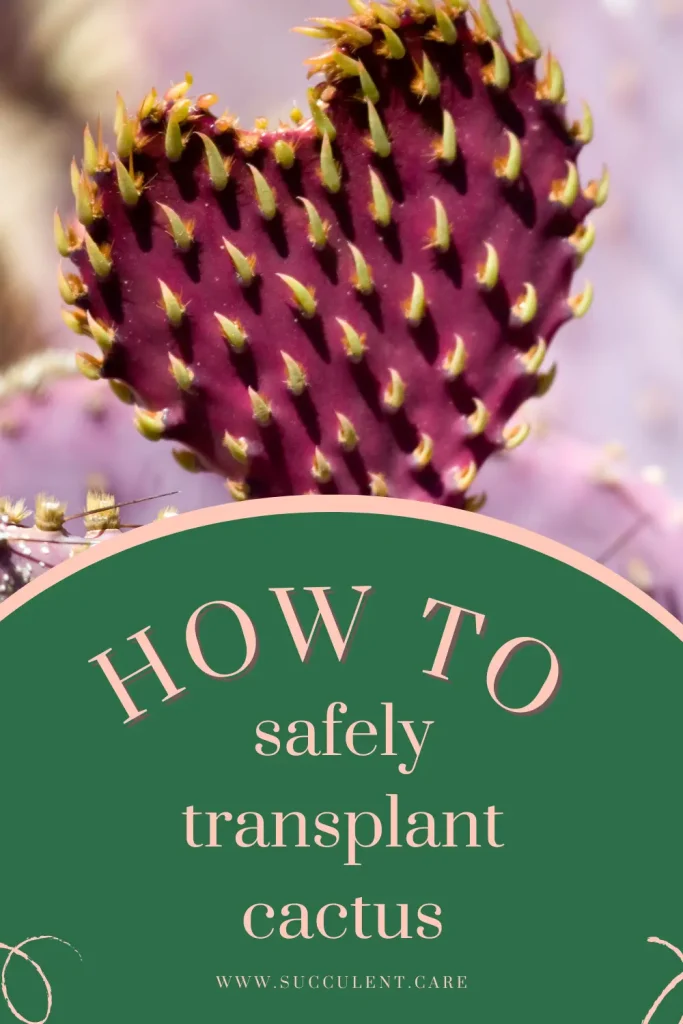
Transplanting a cactus can be a tricky process, but with the right preparation and care, it can be done safely and successfully. It’s important to choose the right time of year, pot, and soil for the transplant, as well as to protect yourself from the cactus’ spines while handling the plant. After transplanting, proper care is crucial for the cactus’ survival, including monitoring for signs of stress or disease, providing proper lighting and temperature conditions, and watering and fertilizing as needed.
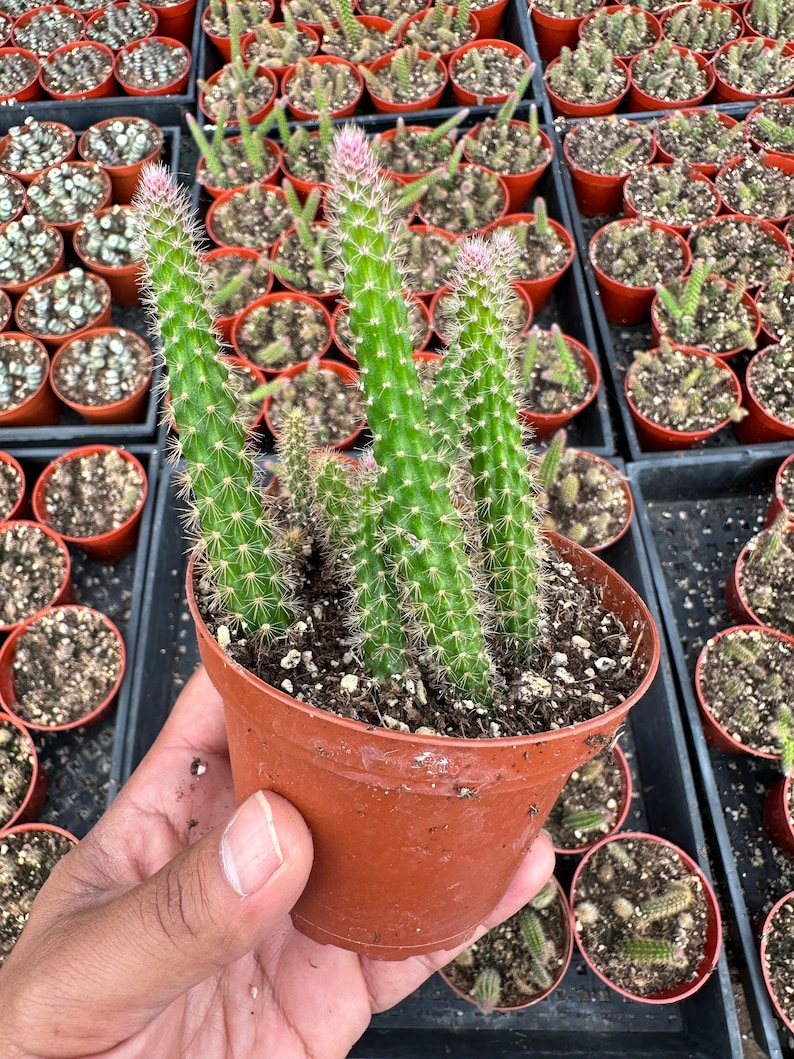
Source: Etsy
By following these steps and guidelines, you can safely transplant your cactus and give it a new home where it can thrive. Remember to be patient and take your time during the process, and always prioritize the safety and well-being of both yourself and the cactus.

